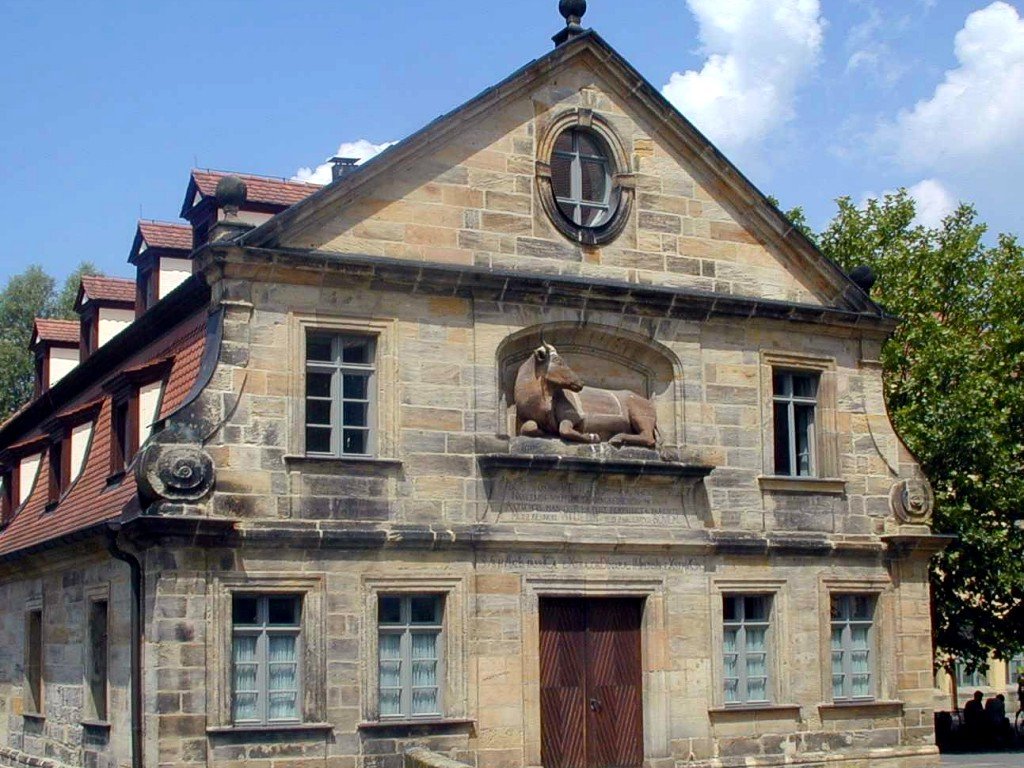#6178. Historic Sandstone Facade with Heraldic Sculpture and Oval Pediment Window
This is a beautiful example of traditional German architecture, likely dating from the 17th-18th centuries. The building is constructed of light sandstone, which is characteristic of historical structures in certain regions of Germany. The facade features a strict symmetrical composition with a triangular pediment at the top.
The central element of the facade is adorned with a sculptural image of a reclining animal (possibly a lion or unicorn) placed in a niche below the pediment. Beneath the sculpture, there is a plaque with an inscription, likely containing historical information about the building or the date of its construction.
The pediment is crowned with an oval window featuring a cross-shaped division, which may indicate the religious significance of the structure or the influence of ecclesiastical architecture. On the left, part of a building with a characteristic half-timbered construction (wooden framework with infill) is visible, creating an interesting contrast with the stone facade of the main building.
The windows of the first and second floors have simple rectangular framing, while the central entrance is distinguished by a wooden door with a diagonal pattern. Decorative side elements in the form of scrolls complement the composition of the facade. The building has wonderfully preserved its historical appearance despite its age.
